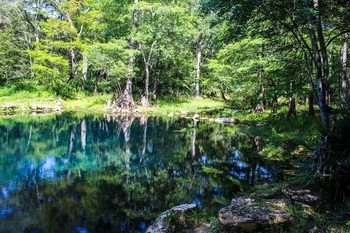 Peacock Spring by Whitney Gray
Our staff recently visited Wes
Skiles Peacock Springs State Park in Suwannee County. This beautiful state
park is conveniently located 20 miles south of Live Oak, which is approximately
90 miles east of Tallahassee and 90 miles north-west of Gainesville. Shaded
trails provide access to old-growth maple forest, bottomland forest, and
several freshwater springs and sinkholes. The main spring is surrounded by
wildflowers, which attract a plethora of butterfly species. Zebra
Longwing are very common and staff also spotted Texan Crescent, Hackberry
Emperor and Giant Swallowtail. The area around Olsen Sink was productive for
birds; Northern Waterthrush, Black-and-white Warblers, Hooded Warbler and
Pileated Woodpecker were present and, a Yellow-billed Cuckoo foraged high above
the trail. This family-friendly site is a great place to visit for a few hours.
Don’t forget your bathing suit though…the crystal-clear spring water provides
respite on a hot sunny day!
Park Address: 18081 185th Road, Live Oak,
FL 32060
Contact: (386)
776-2194
Park Hours: 8am
to sunset
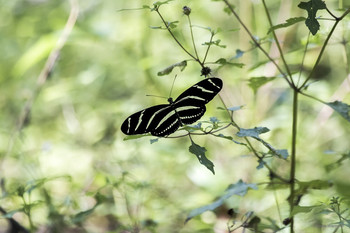 Zebra Longwing by Andy Wraithmell
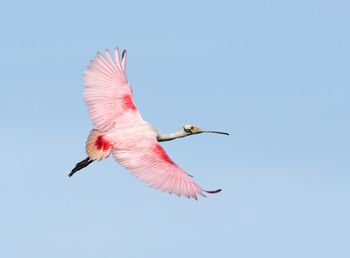 Roseate Spoonbill by Jack Rogers
The Roseate
Spoonbill is one of our most popular Top 30 birds, so we’re told. Their beautiful
plumage and fascinating but bizarre-shaped bill immediately catches the eye,
making for a memorable encounter. Photographers are drawn to “spoonie” flocks
like moths to a flame and a quick search on the internet will reveal a plethora
of spectacular images. So, where can I go to see spoonbills? We thought you’d
never ask!
West
Section
The Tampa Bay area is a great place to look for spoonbills.
They are often reported from Fort
De Soto Park and Weedon
Island Preserve in Pinellas County and, Cockroach
Bay Aquatic Preserve in Hillsborough County.
East
Section
Blackpoint Wildlife Drive and Biolab road at Merritt
Island National Wildlife Drive are both excellent locations for enjoying
flocks of spoonbills. Guana
River Wildlife Management Area in St. Johns County is another excellent
site; look for them in the Big and Little Savannah impoundments. Finally, the
appropriately named “Spoonbill Pond” located at the north end of Big
Talbot Island State Park in Duval County, is another great site to observe
spoonbills especially in late summer/early fall.
South
Section
The wildlife drive at Ding
Darling National Wildlife Refuge on Sanibel Island has long been a Roseate
Spoonbill hotspot. Tip: Go early in the morning to beat the crowds. If crowds
aren’t your thing, a trip to the southern end of Everglades
National Park can be a rewarding spoonbill experience. Don’t forget your
bug spray though! In the evening, flocks of spoonbills can be seen flying
overhead at the Flamingo visitor center area. For the more intrepid, a paddle
out to Gibby Point will
be rewarded with flocks of 100 or more spoonies. What a sight that must be! You
never know you might see an American Flamingo as well.
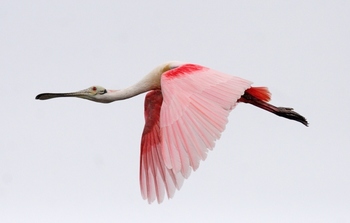 Roseate Spoonbill by Andy Wraithmell
September 9 - Wings
Over Florida at Joe Budd WMA
September 21 to 25 – Birding Festival of the Keys
September 23 – Wings
Over Florida butterfly walk at Deering Estate
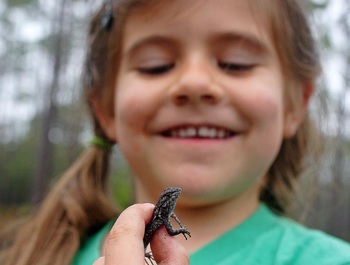 picture by Andy Wraithmell
We tend to think that we have to go far afield (literally)
to see birds and wildlife, but the truth is they’re all around us. Urban and
suburban living can make us a bit “bird-blind” overlooking the birds and
wildlife that are even in our own backyards. City parks, even in very dense
urban areas, act as refuges or oases for wildlife, and given their proximity to
our homes and workplaces, these parks can be great places to take a relaxing
walk and get back in touch with nature. Since these parks are usually equipped
with amenities like playgrounds or ball fields, they also provide a place to
introduce children to wildlife viewing. You don’t have to find a rare species
to make it rewarding – children love watching lizards darting in and out of
pathways or counting mourning doves on wires overhead. Studies show that
children have memorable experiences with the nature that’s easy for them to
access, like neighborhood parks. Try using our Trip Planner to
find a neighborhood park near your home or office. Enjoy the outdoors wherever
you find it!
|